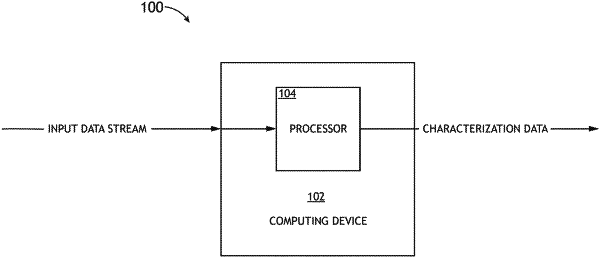| CPC G01S 7/2927 (2013.01) [G01S 7/414 (2013.01); G01S 13/5244 (2013.01); H04B 17/345 (2015.01)] | 14 Claims |

|
1. A system, comprising:
a digital pulse analyzer unit (DPAU), the DPAU comprising at least one processor, the at least one processor configured to:
receive ambient data from an environment;
calculate an average amplitude of the ambient data as a measure of a noise floor;
receive a signal of interest found by the signal of interest exceeding a noise riding threshold, the noise riding threshold being an upward offset from the noise floor;
calculate a running average for amplitude and frequency of the signal of interest;
calculate a running variance for the amplitude and the frequency of the signal of interest;
use the running average and the running variance to provide an adjustment to limits for modulation detection;
use an offset from the noise riding threshold to provide a signal qualification minimum amplitude;
qualify the signal of interest based at least on the signal qualification minimum amplitude;
create a secondary signal qualification minimum amplitude, in addition to, and upwardly offset from the noise riding threshold, wherein the secondary signal qualification minimum amplitude results in signals with a higher signal to noise ratio than the signal qualification minimum amplitude;
adjust the secondary signal qualification minimum amplitude, wherein as the noise floor changes the secondary signal qualification minimum amplitude moves with the noise riding threshold and the noise floor; and
qualify a second signal of interest based at least on the secondary signal qualification minimum amplitude.
|